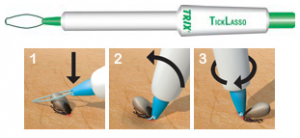
Frequently Asked Questions
FAQs
Our responses to the most frequently encountered questions are below. Click on each one to expand.
I found a tick on me. What do I do?
First of all, don’t panic. This doesn’t automatically mean lyme transmission. Reading just a bit further here will empower you with some pretty strong information to make some good decisions. To the point, not every tick carries the infection. The prime type of transmitting tick is the slightly smaller Blacklegged (deer) tick. While it is true that the larger, common, Dog tick can also carry the lyme organism, it’s much less common. Depending on what area of the country (or world) you live in, you may also want to check regionally. For instance, in the US Midwest, other ticks can carry not only lyme, but the more problematic Spotted Fever, Rickettsia, Erlichiosis and other co-infections

The slightly larger Dog tick in larval, nymph, and adult male and female stages. Nymph to adult are capable of transmitting infection
To give some estimates, maybe one tick in three is a common lyme carrying type. And not all of these carry the infection — maybe again one in three. From here, if the tick has not been on for longer than a few hours (see the tick removal question below), then even a lyme-carrying tick will probably not have had time to transmit the infection.
So.. the best defense is good vigilance; check yourself frequently when you’re in a tick-type environment. And — properly — remove anything you see quickly.
OK, so it’s been on longer. Now what? Again, from the numbers above you can see that lyme transmission is more likely not to happen from a single tick than it is likely. However, lyme transmission can be miserable down the road, so this truly is the time to consider action. Although some will recommend preventative antibiotics under the situation of any bite, taking antibiotics is not without it’s own considerations. My own opinion is to now monitor closely for symptoms. Read the diagnosis section and familiarize yourself with which symptoms are common to lyme. Then if no symptoms appear for an extended period of time, you are probably in the clear. (If this seems too risky to you, then consider seeking a doc who will prescribe precautionary antibiotics in such a case.)
If you choose to wait, take the next action in the meantime. Do some research and mentally line up a good lyme-specialized doctor. If you do suddenly begin to find symptoms, do not delay in the least. This is the time for action. — Having waited this far, you do not want to even delay even another day if at all possible. Go and see that doc immediately, and get a proper treatment. If a lyme infection is given proper treatment within the first few days, it will be completely eradicated with no permanent effects. But it must be treated quickly! I can’t emphasize this strongly enough.
How do I best remove an attached tick?
First of all, take a deep breath — nothing is going to happen differently in the next couple of minutes. Nonetheless, this is a critically important question: There is a right way and a wrong way to remove a tick. And the wrong way has the potential of actually creating an infection where there had not yet been one. The proper way is to grasp, with a tweezers, the mouth of the tick as close to the skin as possible. –Do not grasp the tick on it’s body, which would tend to squeeze its potentially infected contents into the wound. And for this same reason, do not apply vaseline, gasoline, a hot match, or the like to the tick, as this may cause it to regurgitate it’s contents into the wound. Having grasped the tick close to the skin, gently work it’s mouth parts back and forth until the tick lets go — hopefully with it’s own contents un-injected

Capture at the base of the mouth at skin level, release button tightening lasso; and twist to release hyperstome.
Of all the removal devices that I’ve seen, the most ingenious device is this Swedish invention originally at www.tickremover.com. With this remover, through a unique “lasso” effect, its Swedish inventor has embodied all the principles in good tick removal: capture the tick close to the mouth/skin level, assure that the body won’t be squeezed, then for actual removal, twist the tick — which the best of all ways for it to release its hypostome. I believe every house should have one; and we may try to acquire some for distribution here.
Whatever tool you employ, knowing and using these principles will afford you the safest removal.
How is lyme primarily diagnosed? By the tests?
No! Do not depend on the tests. Under some circumstances, it could even be dangerous to wait for the test results. Even the CDC states that Lyme is diagnosed by it’s symptoms (which is called “clinically”), and not by the blood tests. The reason for this is that the tests results are simply well known to be inaccurate — in both directions, positive and negative. Furthermore, what’s worse — the worst cases of lyme will commonly tend to always test negative. (I never did get a positive test result. See falsenegative.htm) An uninformed doctor, relying on these false-negative results can do real damage in the face of a true lyme infection. Lyme is ultimately diagnosed by the presence (or absence) of characteristic lyme symptoms.
It is for this reason that I’ve put the diagnostic tools that I have at this site. (These are accessed here.) By the time you get done reading through the short checklist, and the longer Dr. Bleiweiss essay, you yourself will have a pretty good idea as to whether or not you need to find a good doc, trained in recognizing lyme.
Where can I find a good lyme-literate doctor?
If you’ve decided that you want to pursue further medical expertise, finding a proper doctor who is experienced in recognizing and treating lyme is one of the most important things that you can do. An inexperienced lyme doc can either entirely miss the diagnosis, or dangerously delay it (by incorrectly) waiting for test results. Or even if he is treating it as lyme, he can under-treat the condition, which could also be dangerous.
This question is, in fact, one of the most common (and in my opinion, important) of all the questions that I get at this site. Read through this page which will give you a very detailed answer to this question. Another good resource would be to do an Internet-search for Lyme organizations, and make some quick contacts to these groups, asking for recommendations in your area.
In the early days of Internet there was the newsgroup bulletin board sci.med.diseases.lyme that was once a wonderful resource with a great deal of outstanding dialog. On a recent visit, after twenty years away, there still remains some spam and uncivility, but there is yet good information there. This may (or may not) be a good source. See also, though, the reasons why most people will not share their doc’s information openly.
One day, if it seems there is interest, we may start a similar area of the site here, that will yield good information, and doctor referrals. –Meanwhile, that information simply has not come to us here.
What is a good proper treatment?
This is a very good question, as a proper treatment can mean the difference between a cure and a permanent infection. However, I’m not a doctor (see this answer) and don’t know anything beyond my own experience. This, however, I do know — and it’s important to be aware of as you consult your doc: The lyme organism has a well known cycle of active and dormant phase, of 28 days. Any treatment that is shorter than this is doomed to failure, because the organisms are untouchable by antibiotics during their dormant phase. Normal treatments are anything from 4-6 weeks to longer, depending on the infection and it’s severity. But nothing less. You will feel better with a three week course, but such a delay as one goes happily off under the impression of “cure”, has caused more than one permanent infection. Find a good doc.
Also, a couple of hundred milligrams of one antibiotic, once or twice per day, is also likely insufficient treatment. Again, I’m not a doc, but if you’d like a comparison, read the page that gives my own history.
Find a good doc.
What is the best long-term prevention?
In my opinion, education. Familiarize yourself with the symptoms of lyme, and with the other issues as discussed on this page. Armed with this information, believe it or not, you have everything that you need to keep from ever getting permanent lyme. Even if you ever do get an infection, you will know what to do — and where to do it quickly enough that you can treat the infection quickly, with no long term effects.
Concerning any lyme vaccine, my own opinion is that they’re promoting it with dangerous confidence (as advertisements tend to be). I personally believe it dangerous to rely on this vaccine for a number of reasons. As an example, the vaccine currently protects against two known strains of lyme. Except that there are 60 of them! What do you do for the other 58? Naively thinking that you’re totally protected can be dangerous to your health.
Again, education is the best medicine.
I have a sed rate by modified Westergren 39H, with a high hematocrit. I'm on I.M. Biaxin and Zithromax, but my neighbor has a supra-clavicular IV picc. What is your answer?
I‘m not a doctor.